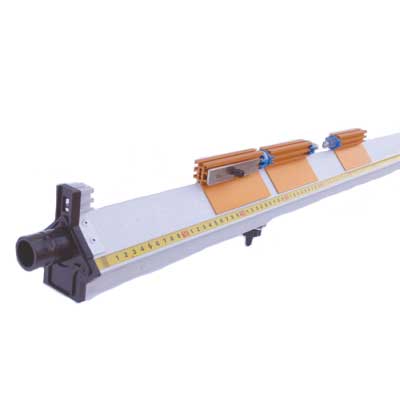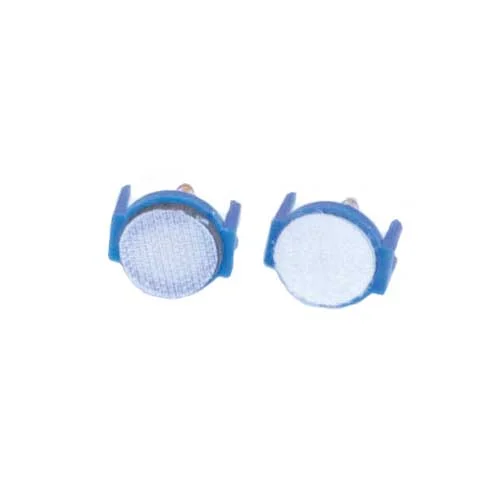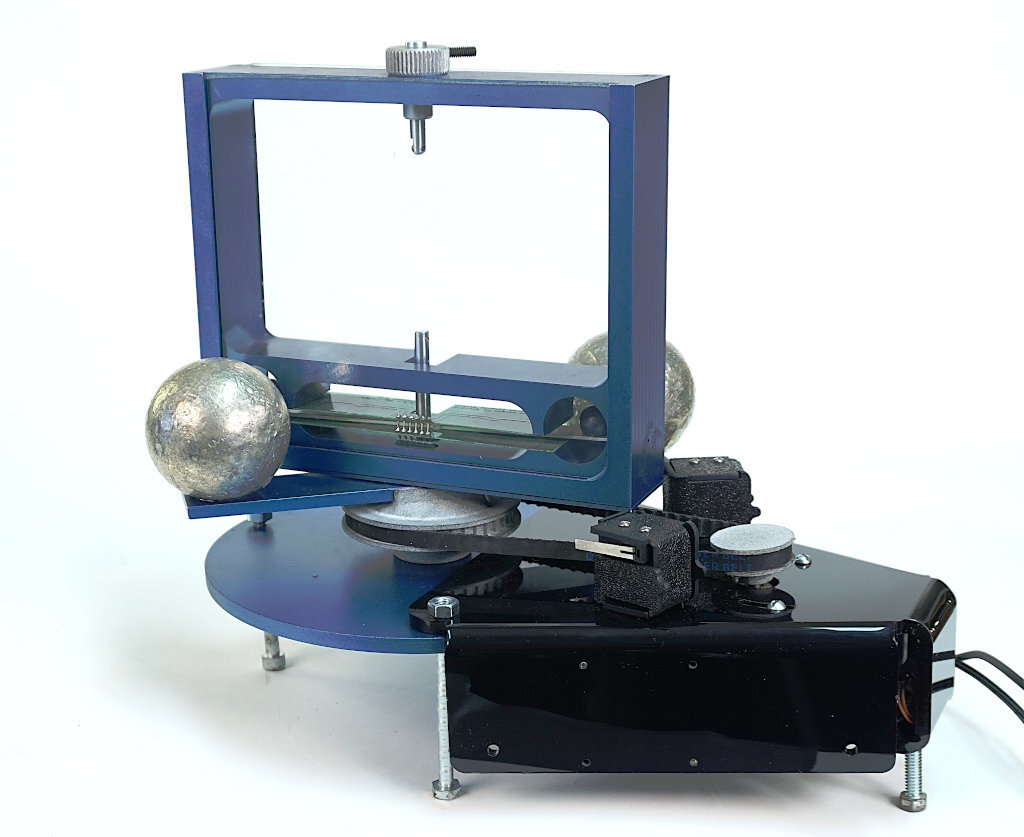Mechanics
TEL-RP6020
This sensor enables accurate measurement of the position of the Kater Pendulum. From this data, the period is measured with high accuracy. The pendulum sensor is remarkably easy to set up and use, resulting in a quicker overall experiment than with a photogate timer.
TEL-RP6010SYS
Consists of the Kater Pendulum and the TEL-611-0103 Smart Timer. Supply two lab stands and you will have everything you need to measure g.
TEL-RP6010
Kater Precision Pendulum
-Pendulum Rotating about axis '2'
-Measure g to a few parts per thousand in less than ten minutes.
-Measure g to a few parts in ten thousand in one lab period.
-Take data with a photogate or a stopwatch.
Finally a Kater Pendulum has been designed to allow a measurement of g to within a few parts per thousand in about 10 minutes. In addition, a very precise measurement of g (to within a few parts in ten thousand) can be performed in a single lab period.
The axes of rotation are by means of a “knife edge” which is inserted through one or the other of two holes; whose placement in the pendulum were carefully chosen. Although period measurements may be made with a stopwatch, a photogate is preferred to: (i) eliminate large reaction time errors, and (ii) insure that data is collected in an amplitude regime that is essentially isochronous.
TEL-235
Gliders and springs on Air Tracks make a beautiful harmonic oscillator with sharp resonances. The simplest resonator is a single Glider and two springs and has one resonant frequency. Adding a second Glider and spring adds another degree of freedom and a second resonance. The system has an additional resonance for each Glider added. The kit is supplied with five 150 g Gliders, six 2.5 cm long stainless steel springs, and five ceramic magnets for damping random motion. They provide a comprehensive course in vibration theory when set up on an Air Track. Including manual. Requires an air track (such as our model TEL-210), sold separately. Photogate timer and air track not included, both sold separately.
TEL-210
Here’s a great value in a student air track. Study one-dimensional motion, collisions and the conservation of momentum at low friction. Our sturdy triangular aluminum track is lightweight yet durable. 1.5 meters in length, it has a smooth surface and high linearity due to precision machining. One row of 0.95 mm diameter holes on each side. Re-engineered spring bumpers have significantly lower friction loss than previous design. Updated gliders have a lower center of mass. Accessories are less massive to improve accuracy. Requires TEL-218 Air Source (not included).
TEL-RP2111W
Replacement Tungsten wire for Cavendish Balance.
25’ of 25 micron diameter tungsten wire for Cavendish Balance.
TEL-611-0103
Smart Timer, Tabletop Normal Display, with 2 Photogates, Freefall and Power Supply.
Why pay more when this accurate and versatile timer does far more for far less? You can measure the time interval between two photogates, measure the time it takes to pass through one photogate, measure acceleration of a released ball, determine the acceleration due to gravity (with a picket fence; not included), determine elastic and inelastic collision times, calculate cycles, determine the frequency of a rotating object, determine the period of a pendulum, and count time with great accuracy. Up to 20 data points can be stored in memory for instant recall, allowing you to watch the experiment as it happens and perform calculations after the fact. Includes a magnetic ball drop. Rechargeable. May be used with or without the adapter.
TEL-218
The Air Source has superior sound absorbing characteristics due to three thick foam sound absorbers in the air input. The straight through air path avoids pressure loss and unnecessary turbulence. The Air Source operates one Intermediate Air Track, or two Basic Air Tracks. A two-meter hose is included with each Air Source. The Air Source can supply longer Tracks as well.
TEL-211
A 2 m flexible air hose with end fitting to attach to the Air Source and either the Basic or Two Meter Air Track. This hose is required if connecting two tracks to a single Air Source.
TEL-EA-041
100g glider for Air Tracks in gold. These float above the Air Track.
TEL-EA-042
200g glider for Air Tracks in black. These float above the Air Tracks.
TEL-EA-043
300g glider for Air Tracks in red. These float above the Air Track.
TEL-221
Set of 8 riser blocks that turns the Air Track into an inclined plane.
TEL-220A & TEL-220B
Packages of 10 - 2.5cm or 5.0cm springs used to join gliders together or to the end of the track.
TEL-220A $63.00
TEL-220B $82.00
TEL-RP2111RHC
This add on to the Cavendish Balance can be used to offer students the opportunity to perform the experiment from their dorm room. Or, it can be used from the same room as the Cavendish Balance to improve isolation and repeatability of the experiment. The remote control simply rotates the exterior masses of the Cavendish Balance via a small stepper motor. The motion is quick and repeatable, but does not vibrate the test masses.
Software is included and is easy to set up. The Cavendish Balance Remote control is attached via the already existing screws on the Cavendish balance, and setup only takes a few minutes.
Best of all, the data is exceptional. Ask for a demonstration today!
TEL-RP2111SYS
Limit the frustration involved in performing this classic experiment. The small size, short period, and digital sensor make setup easy, and the remote control makes operation a breeze.
Get 20% accurate results in a single lab period.
Remote Control makes the experiment repeatable and reduces disturbances
Short oscillation periods of 2-4 minutes.
Software to record data included with each unit.
Perfect for advanced undergraduate laboratory classes in mechanics.
You can now eliminate most of the frustrations and aggravation in performing this historic experiment The use of this simple device to measure the gravitational constant G (in a single lab period!) will impress your students in a way no textbook or even video can match.





















TEL-RP2111
Limit the frustration involved in performing this classic experiment. The small size, short period, and digital sensor make setup easy.
Get 10% accurate results in a single lab period.
No more optical lever jitters due to revolutionary SDC sensor technology.
Short oscillation periods of 2-4 minutes.
Software to record data included with each unit.
Perfect for advanced undergraduate laboratory classes in mechanics.
You can now eliminate most of the frustrations and aggravation in performing this historic experiment with this new cutting edge technology developed and patented by Dr. Randall Peters. (Click here for a detailed explanation of these unique sensors.) The use of this simple device to measure the gravitational constant G (in a single lab period!) will impress your students in a way no textbook or even video can match.